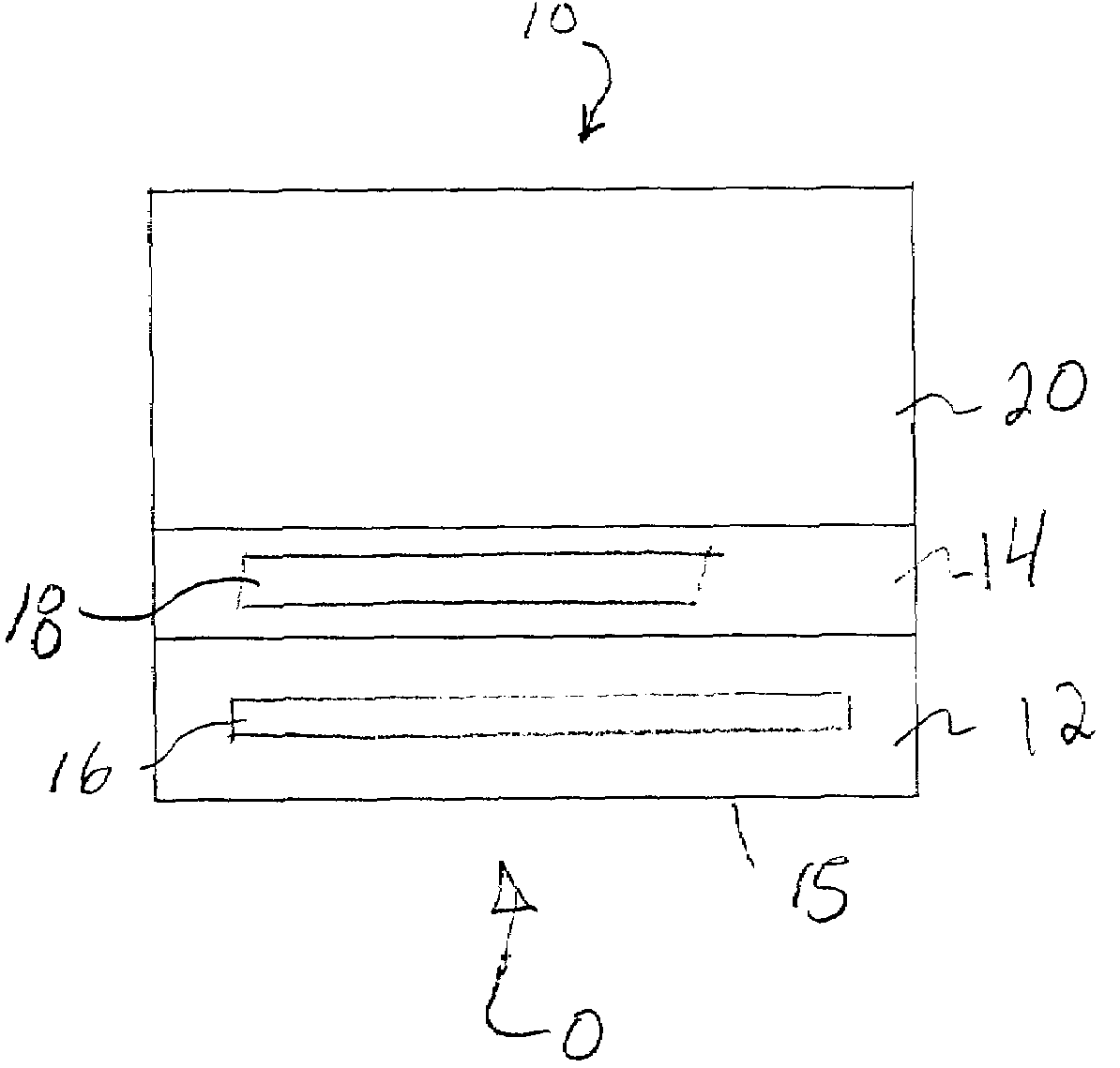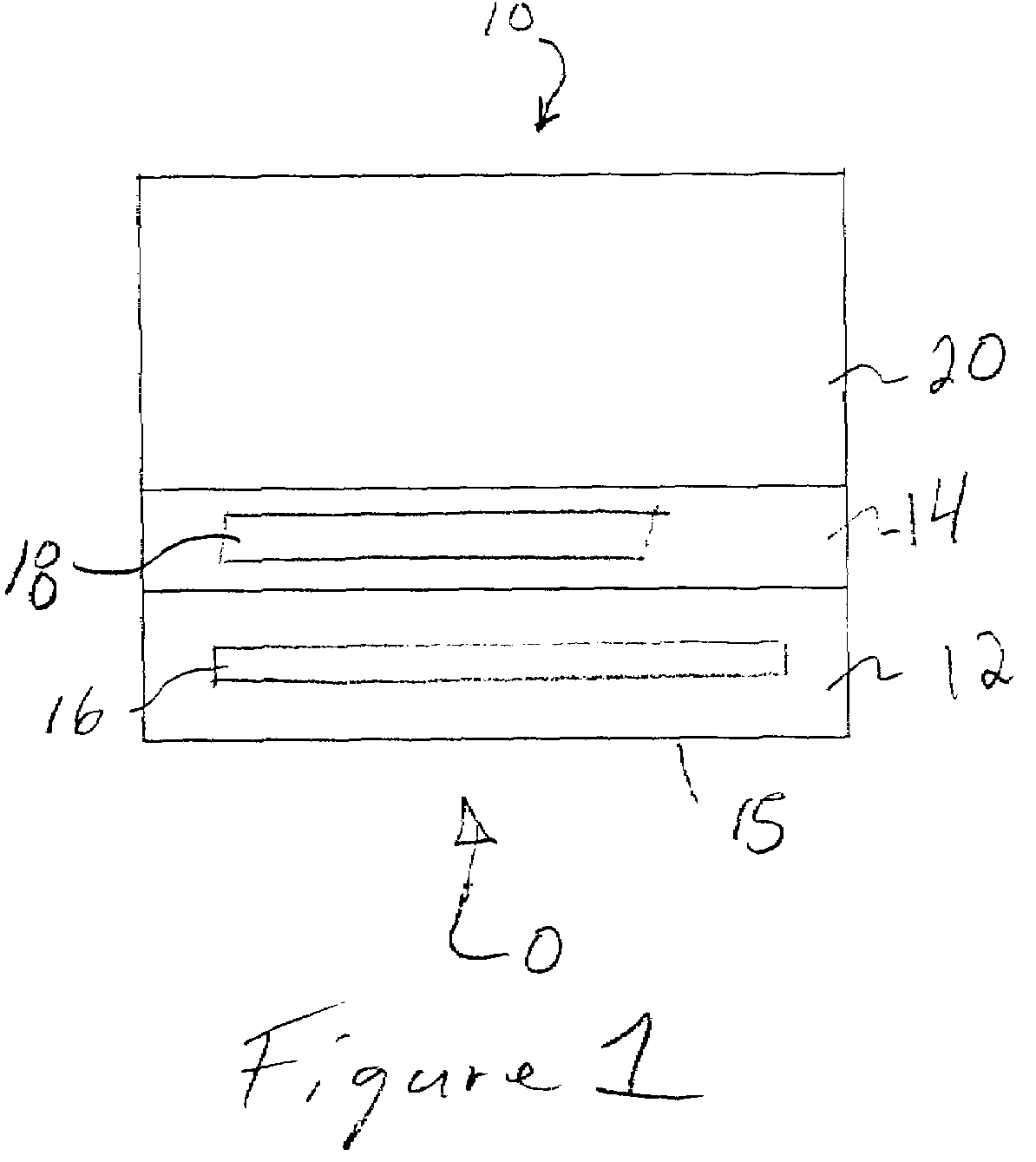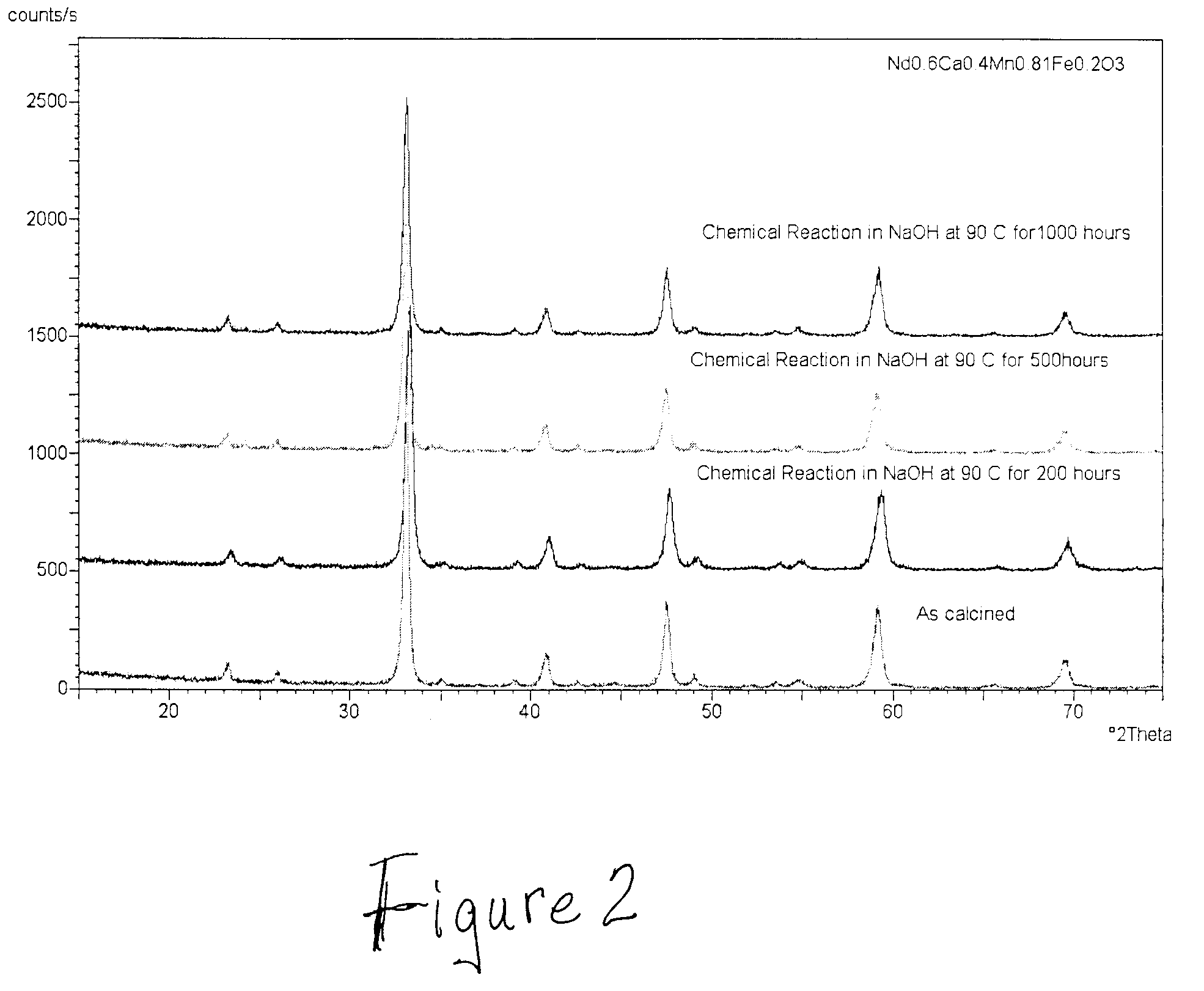Gas diffusion electrode and catalyst for electrochemical oxygen reduction and method of dispersing the catalyst
a technology of gas diffusion electrode and catalyst, which is applied in the direction of metal/metal-oxide/metal-hydroxide catalyst, chemical/physical process, inorganic chemistry, etc., can solve the problems of high over-voltage of electrochemical oxygen reduction gas diffusion cathode using previous catalysts, and and neither the stability of perovskite-type oxides in concentrated alkaline solution
- Summary
- Abstract
- Description
- Claims
- Application Information
AI Technical Summary
Benefits of technology
Problems solved by technology
Method used
Image
Examples
example 1
Preparation of Oxide Catalyst
[0064]First, an aqueous solution of neodymium nitrate, an aqueous solution of calcium nitrate, an aqueous solution of manganese nitrate and an aqueous solution of iron nitrate were mixed together in the appropriate molar proportions to form a mixed aqueous nitrate solution for making Nd0.6Ca0.4(Mn0.8Fe0.2)1.01O3+δ. Ethylene glycol and citric acid were added as chelating agents. This mixed aqueous solution was then heated in a glass container until the solution boiled and eventually ignited in the presence of air. Following ignition and an additional rise in temperature to about 350 C the remaining oxide precursor self-dried. Following drying, the remaining contents where placed in a conditioned sagger and calcined in air at 800 C for 8 hours. After calcining, X-ray diffraction analysis indicated the material to have a single phase of the perovskite structure. After the calcining the material was ball milled for 24 hours to attain a surface area of 17.2 m...
example 2
[0077]The gas diffusion electrode was formed in the same manner as that in Example 1 except that Nd0.6Ca0.4Mn1.01O3+δ was the catalyst oxide synthesized instead of Nd0.6Ca0.4(Mn0.8Fe0.2)1.01O3+δ. The chemical stability of the oxide catalyst was again evaluated where high surface area samples were immersed in an aqueous solution of sodium hydroxide at a concentration of 33 percent by weight and at a temperature of 90° C. for 1,000 hours. After 1000 hours time the XRD analysis indicated that only 0.16% of the material had reacted to form a hydroxide second phase based on comparison of the peak areas. FIG. 5 shows the diffractograms indicating the material to be very stable as in Example 1. Some of the material from this example was milled in an attrition mill for 16 hours to reach a specific surface area of 30.3 m2 / g. Subsequently cathodes were made and tested electrochemically as in Example 1. FIG. 3 shows the polarization curves of cathodes with flowing oxygen. FIG. 4 is a plot of c...
example 3
[0078]To further increase the activity of the catalyst a portion of the catalyst was made in the presence of the carbon to be used for the reaction layer. Nd0.6Ca0.4Mn1.01O3+δ prepared in example 2 was mixed with carbon black in the proportions of 8 parts perovskite, 7 parts carbon black, for example KETJEN BLACK EC600JD (BET specific surface area of 1,270 m2 / g) from Lion Corporation and 3 parts of a second carbon black, for example DENKA BLACK AB-7 from Denki Kagaku Kogyo K. K. Thus the catalyst to carbon ratio was 4:5 at this point. Next 80 parts water was added and 0.3 parts oleic acid to serve as a dispersant.
[0079]Next, an aqueous solution of neodymium nitrate, an aqueous solution of calcium nitrate, an aqueous solution of manganese nitrate were mixed together in the appropriate molar proportions to form a mixed aqueous nitrate solution for making Nd0.6Ca0.4Mn1.01O3+δ of sufficient quantity such that the final ratio of perovskite oxide to carbon will be 1:1 after adding to the ...
PUM
| Property | Measurement | Unit |
|---|---|---|
| operating voltage | aaaaa | aaaaa |
| current density | aaaaa | aaaaa |
| current density | aaaaa | aaaaa |
Abstract
Description
Claims
Application Information
 Login to View More
Login to View More - R&D
- Intellectual Property
- Life Sciences
- Materials
- Tech Scout
- Unparalleled Data Quality
- Higher Quality Content
- 60% Fewer Hallucinations
Browse by: Latest US Patents, China's latest patents, Technical Efficacy Thesaurus, Application Domain, Technology Topic, Popular Technical Reports.
© 2025 PatSnap. All rights reserved.Legal|Privacy policy|Modern Slavery Act Transparency Statement|Sitemap|About US| Contact US: help@patsnap.com



